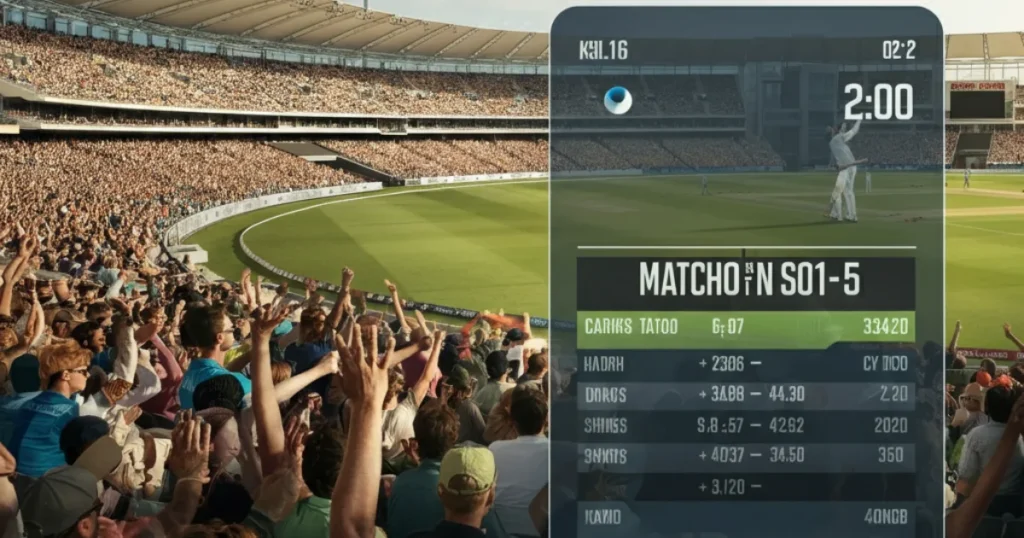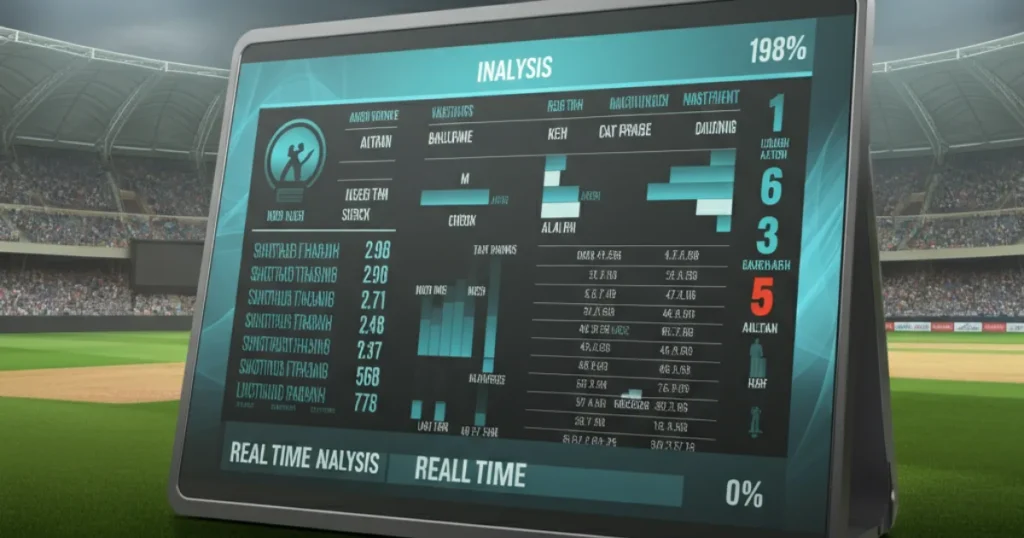Australia National Football Team Games

Qatar National Football Team Games

Uruguay National Football Team Games

Italy National Football Team Games

Ecuador National Football Team Games

India National Under-23 Football Team Games
Match Scorecard | Live Scores, Stats & Results in Real-Time

Cricket is more than just a sport in India—it’s a passion that unites millions of fans across the country. Whether you’re cheering for India in an international match, following your favorite IPL team, or watching a local game at the park, one thing that keeps everyone glued is the match scorecard. If you’re new to cricket or just curious about how to read a scorecard, don’t worry! This article will break it down in a simple, easy-to-understand way for fans of all ages in India. By the end, you’ll know exactly what a match scorecard is, why it’s important, and how to read it like a pro.
What is a Match Scorecard?
A match scorecard is like a report card for a cricket game. It’s a summary that tells you everything that happened during a match—how many runs were scored, who took wickets, how many balls were bowled, and much more. Think of it as the story of the game told through numbers and names. Whether it’s a thrilling T20 match, a nail-biting ODI, or a classic Test match, the scorecard captures every detail.
In India, where cricket is a religion, scorecards are everywhere—on TV screens, mobile apps, newspapers, and even on scoreboards at local grounds. For fans, understanding the scorecard is key to enjoying the game even more, whether you’re watching Virat Kohli smash a century or Jasprit Bumrah take a five-wicket haul.
Why is the Match Scorecard Important?

The match scorecard is important because it gives you a quick snapshot of the game. Here’s why every cricket fan in India should care about it:
- Tracks Performance: It shows how each player performed—batsmen, bowlers, and even fielders. Did Rohit Sharma hit a six? Did Ravindra Jadeja bowl a maiden over? The scorecard has it all.
- Tell the Story: Even if you miss watching the match live, the scorecard lets you follow the action ball-by-ball.
- Helps Compare Teams: It shows how both teams are doing—runs scored, wickets lost, and overs played—so you can see who’s ahead.
- Excites Fans: For Indian fans, seeing a player like Suryakumar Yadav score a quick 50 or Mohammed Shami take wickets feels like a personal victory, and the scorecard makes those moments official.
- Useful for Analysis: Coaches, players, and analysts use scorecards to study strategies and improve performance.
Now, let’s dive into how a match scorecard works and how you can read one easily.
Parts of a Cricket Match Scorecard
A cricket match scorecard might look like a bunch of numbers and abbreviations at first, but it’s actually very simple once you know what each part means. Here’s a breakdown of the main sections you’ll find in a typical scorecard, explained in a way that even kids can understand.
1. Team Information
At the top of the scorecard, you’ll see the names of the two teams playing, like “India vs Australia” or “Mumbai Indians vs Chennai Super Kings.” It also shows:
- Innings: Which team is batting or bowling first.
- Total Runs: The total runs scored by the batting team.
- Wickets Lost: How many batsmen have been dismissed (e.g., 5 wickets means 5 players are out).
- Overs: The number of overs bowled (an over is 6 balls).
For example:
- India: 250/6 in 50 overs This means India scored 250 runs, lost 6 wickets, and played all 50 overs in an ODI match.
2. Batting Scorecard
This section lists all the batsmen who played for the team and how they performed. For each batsman, you’ll see:
- Name: The player’s name, like “Virat Kohli.”
- Runs Scored: How many runs they made (e.g., 75 runs).
- Balls Faced: How many balls they faced (e.g., 80 balls).
- Status: Whether they’re “out” (dismissed) or “not out” (still batting).
- How Out: If dismissed, it shows how they got out—like “caught,” “bowled,” “lbw” (leg before wicket), or “run out.”
- Fours and Sixes: How many boundaries (4 runs) or sixes (6 runs) they hit.
- Strike Rate: This shows how fast they scored runs, calculated as (Runs ÷ Balls Faced) × 100. For example, 75 runs off 50 balls = a strike rate of 150.
Example Batting Scorecard:
| Batsman | Runs | Balls | 4s | 6s | Status | Strike Rate |
| Rohit Sharma | 45 | 30 | 5 | 2 | Caught | 150.00 |
| Virat Kohli | 82 | 90 | 8 | 1 | Not Out | 91.11 |
| Suryakumar Yadav | 20 | 15 | 3 | 0 | Bowled | 133.33 |
This tells us Rohit Sharma scored 45 runs quickly, Virat Kohli played a steady innings, and Suryakumar Yadav got out after a quick 20.
3. Bowling Scorecard
This part shows how the bowlers from the opposing team performed. For each bowler, you’ll see:
- Name: The bowler’s name, like “Jasprit Bumrah.”
- Overs Bowled: How many overs they bowled (e.g., 10 overs).
- Maidens: Overs where no runs were scored (e.g., 2 maidens).
- Runs Conceded: How many runs the bowler gave away (e.g., 40 runs).
- Wickets Taken: How many batsmen they dismissed (e.g., 3 wickets).
- Economy Rate: Runs given per over (Runs ÷ Overs). For example, 40 runs in 10 overs = an economy of 4.00.
Example Bowling Scorecard:
| Bowler | Overs | Maidens | Runs | Wickets | Economy |
| Jasprit Bumrah | 10 | 2 | 35 | 3 | 3.50 |
| Ravichandran Ashwin | 8 | 1 | 45 | 1 | 5.62 |
| Mohammed Shami | 10 | 0 | 50 | 2 | 5.00 |
This shows Bumrah was very economical and took 3 wickets, while Shami was a bit more expensive but still took 2 wickets.
4. Extras
Extras are runs that the batting team gets without the batsman hitting the ball. These include:
- Wides (wd): When the bowler bowls a ball too far from the batsman.
- No Balls (nb): Illegal deliveries, like overstepping the crease.
- Byes (b): Runs scored when the ball passes the batsman and wicketkeeper.
- Leg Byes (lb): Runs scored when the ball hits the batsman’s body (usually legs) but not the bat.
- Penalties: Rare runs given for rule violations.
For example: Extras: 15 (w 5, nb 2, b 4, lb 4) This means the team got 15 extra runs from various mistakes by the bowling side.
5. Fall of Wickets
This shows when each batsman got out and at what score. For example:
- 1-50 (Rohit Sharma, 10.2 overs)
- 2-120 (Shikhar Dhawan, 20.1 overs) This means Rohit got out when the team score was 50 in the 10th over, and Dhawan got out at 120 in the 20th over.
6. Match Details
This section includes extra info like:
- Venue: Where the match was played, like Eden Gardens, Kolkata.
- Date: When the match happened.
- Result: Who won or if it was a draw/tie.
- Player of the Match: The standout performer, like “Virat Kohli for scoring 100 runs.”
How to Read a Scorecard: A Step-by-Step Guide

Let’s make it super easy with a step-by-step guide to reading a scorecard, perfect for Indian fans of all ages:
- Check the Team Score: Look at the total runs and wickets (e.g., 300/7 in 50 overs). This tells you how the batting team did.
- Look at the Batsmen: See who scored the most runs and how fast (check strike rate). Notice who’s “not out” and who hit the most fours/sixes.
- Check the Bowlers: Look for bowlers with the most wickets and lowest economy rates—they’re the stars of the bowling side.
- Spot the Extras: See if the bowling team gave away too many wides or no balls.
- Follow the Fall of Wickets: This shows the key moments when the batting team lost players.
- Understand the Match Context: Check the overs to know if it’s a T20 (20 overs), ODI (50 overs), or Test match (unlimited overs).
Why Indian Fans Love Scorecards
In India, cricket is a way of life. From kids playing gully cricket in Mumbai to families watching IPL matches in Delhi, scorecards bring the game closer to everyone. Here’s why they’re so special:
- Celebrating Heroes: When you see “MS Dhoni: 50* (not out)” on the scorecard, it’s a moment of pride for every Indian fan.
- Tracking Rivalries: Scorecards let you compare India vs Pakistan or Mumbai Indians vs Chennai Super Kings, making every match more exciting.
- Easy to Share: Fans love sharing scorecards on WhatsApp or social media to discuss their favorite players’ performances.
- Learning the Game: For young fans, reading scorecards is a fun way to learn about cricket terms like “strike rate” or “economy.”
Tips to Stay Updated with Scorecards
Want to keep up with match scorecards? Here are some tips for Indian fans:
- Mobile Apps: Use apps like Cricbuzz or ESPNcricinfo for live scorecards.
- TV Broadcasts: Channels like Star Sports show scorecards during live matches.
- Newspapers: Check sports sections in papers like The Times of India for match summaries.
- Local Grounds: If you’re at a local match, look at the scoreboard or ask for a printed scorecard.
- X Platform: Follow cricket accounts on X for real-time scorecard updates during big matches.
Common Terms You’ll See on a Scorecard
Here are some terms you might find confusing at first, explained simply:
- Maiden Over: An over where no runs are scored off the bat.
- Duck: When a batsman scores 0 runs.
- Century: When a batsman scores 100 runs or more.
- Five-Wicket Haul: When a bowler takes 5 or more wickets in an innings.
- Run Rate: The average runs scored per over (Total Runs ÷ Overs).
Fun Fact for Indian Fans
Did you know that Sachin Tendulkar holds the record for the most runs in international cricket? His name has appeared on scorecards with over 34,000 runs across Tests and ODIs! Every time you see a scorecard, you’re looking at a piece of cricket history, just like Sachin’s legendary performances.
Conclusion
The match scorecard is your window into the heart of a cricket game. Whether you’re a young fan in Chennai dreaming of becoming the next Ravindra Jadeja or a grandparent in Kolkata reminiscing about Kapil Dev’s 1983 World Cup, the scorecard is something everyone can enjoy. It’s simple, exciting, and tells the story of every boundary, wicket, and victory.
Next time you watch a match—whether it’s India vs England or an IPL thriller—grab the scorecard and follow along. You’ll feel like you’re part of the action, cheering for every run and wicket. So, go ahead, check out a scorecard, and let the game come alive!
